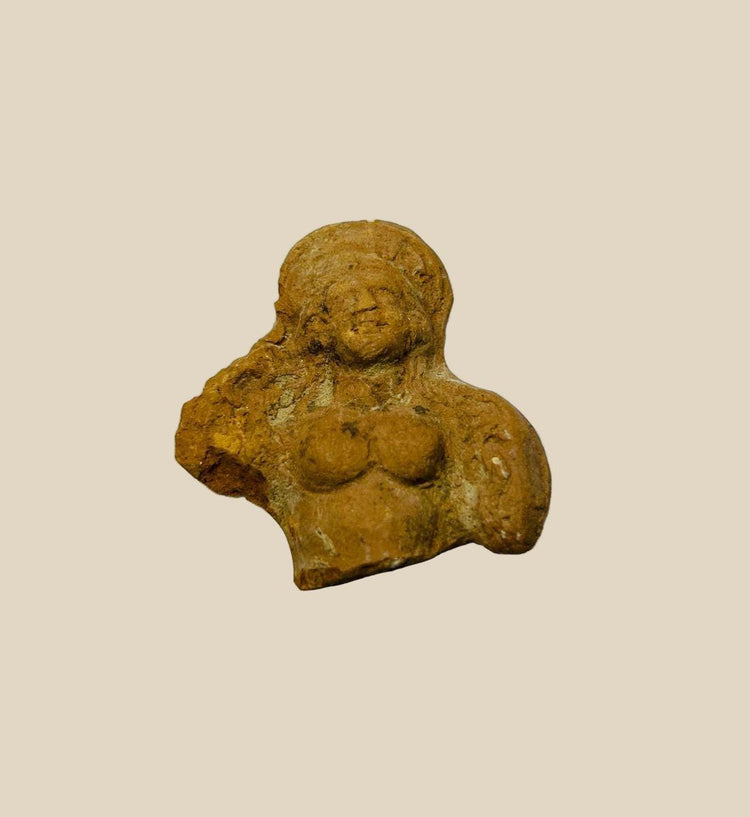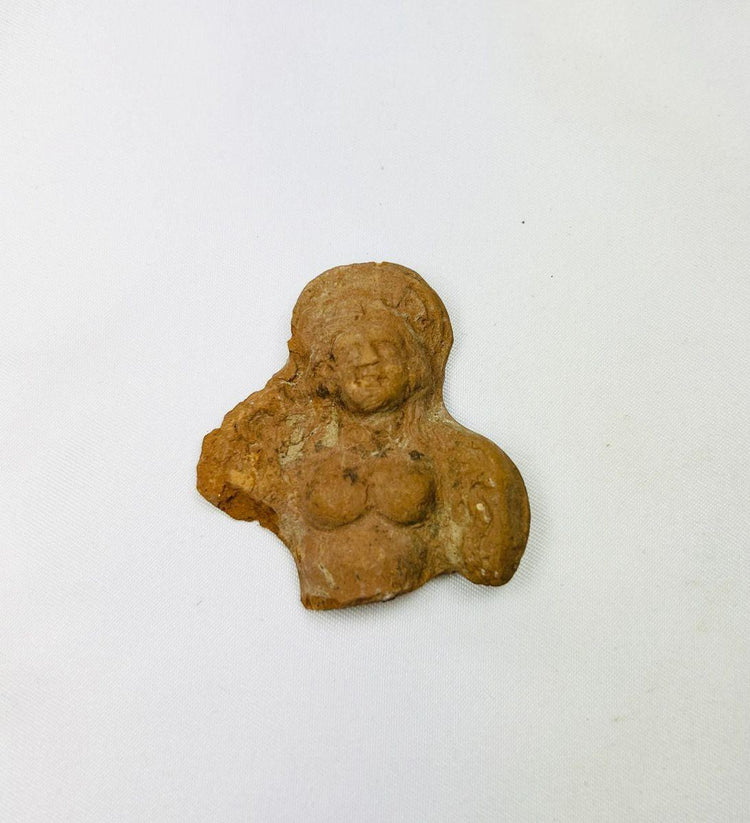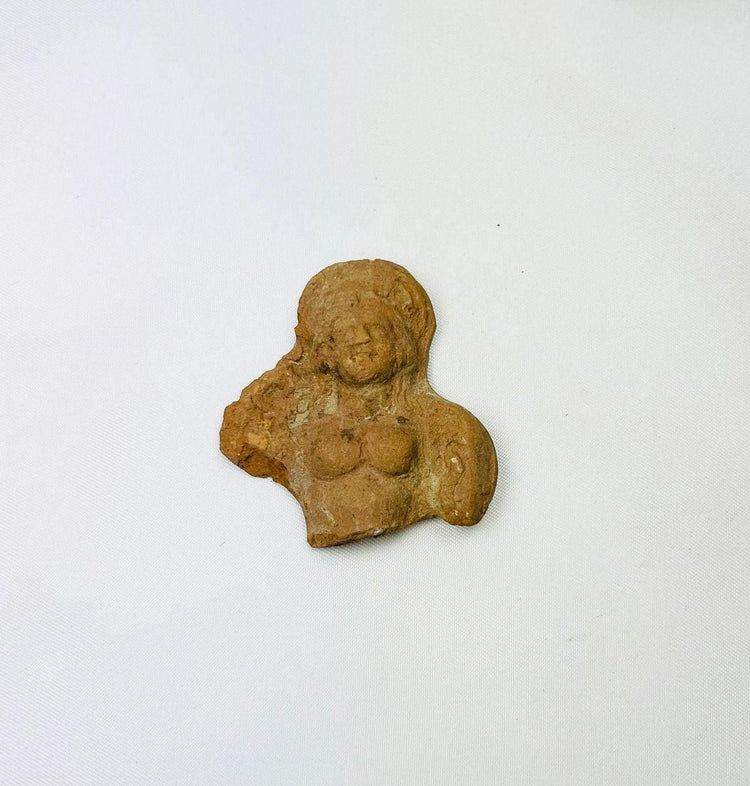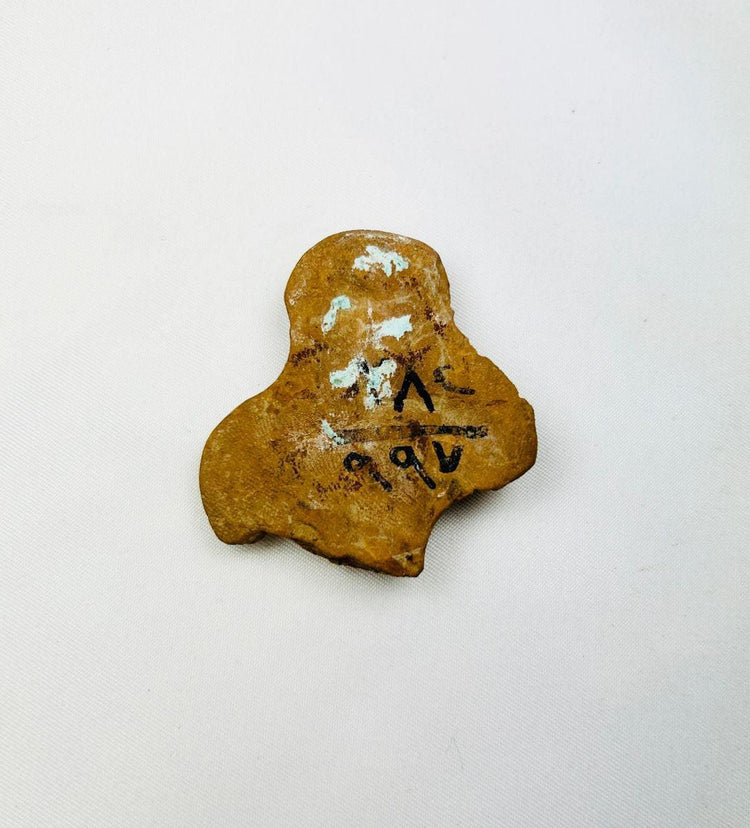Ancient Egyptian Terracotta Fragment | Female Figurine Torso | Ptolemaic Period | Circa 200–100 BCE
Description
More
Less
Historical Context & Origin
Region: Egypt (Ptolemaic Period)
Material: Terracotta clay
Period: Circa 200–100 BCE
Description
This ancient clay fragment, likely from Egypt’s Ptolemaic period, offers a rare glimpse into the artistic and cultural fusion of the era. Measuring approximately 2 inches by 2 inches, the fragment preserves part of a female figure with discernible facial details and an upper torso. Once part of a larger figurine or votive plaque, it reflects both aesthetic refinement and religious function in the Ptolemaic world.
Features
- Partial depiction of a female figure with facial features and torso
- Hellenistic-inspired hairstyle and form blended with Egyptian motifs
- Terracotta composition with a rich, ancient patina
- Small yet significant relic of Ptolemaic artistic tradition
Cultural Significance
The Ptolemaic dynasty (305–30 BCE) marked a period of profound cultural exchange, where Greek artistic influence merged with Egyptian religious and symbolic traditions. Figurines and plaques like this were often votive offerings, associated with fertility, protection, or prosperity. The hybrid style illustrates the adaptability of Egyptian art under Greek rule, creating forms that were both familiar and innovative. Such fragments are not only devotional remnants but also windows into the cultural interplay that defined late ancient Egypt.
Condition
Well-preserved fragment with weathering and patina consistent with age. Surface details remain visible, enhancing its authenticity and historical resonance.
Dimensions (approximate)
Height: 2 in
Width: 2 in
Age
Circa 200–100 BCE
Learn More
Discover the history and culture of Egypt’s Ptolemaic Period
Explore more ancient Egyptian relics, including genuine mummies and burial objects
Description
Historical Context & Origin
Region: Egypt (Ptolemaic Period)
Material: Terracotta clay
Period: Circa 200–100 BCE
Description
This ancient clay fragment, likely from Egypt’s Ptolemaic period, offers a rare glimpse into the artistic and cultural fusion of the era. Measuring approximately 2 inches by 2 inches, the fragment preserves part of a female figure with discernible facial details and an upper torso. Once part of a larger figurine or votive plaque, it reflects both aesthetic refinement and religious function in the Ptolemaic world.
Features
- Partial depiction of a female figure with facial features and torso
- Hellenistic-inspired hairstyle and form blended with Egyptian motifs
- Terracotta composition with a rich, ancient patina
- Small yet significant relic of Ptolemaic artistic tradition
Cultural Significance
The Ptolemaic dynasty (305–30 BCE) marked a period of profound cultural exchange, where Greek artistic influence merged with Egyptian religious and symbolic traditions. Figurines and plaques like this were often votive offerings, associated with fertility, protection, or prosperity. The hybrid style illustrates the adaptability of Egyptian art under Greek rule, creating forms that were both familiar and innovative. Such fragments are not only devotional remnants but also windows into the cultural interplay that defined late ancient Egypt.
Condition
Well-preserved fragment with weathering and patina consistent with age. Surface details remain visible, enhancing its authenticity and historical resonance.
Dimensions (approximate)
Height: 2 in
Width: 2 in
Age
Circa 200–100 BCE
Learn More
Discover the history and culture of Egypt’s Ptolemaic Period
Explore more ancient Egyptian relics, including genuine mummies and burial objects
You May Also Like

















